The aim of the S experiments is to prepare the planned M and L experiments by investigating the basic physical processes occurring in the cometary surface layers.
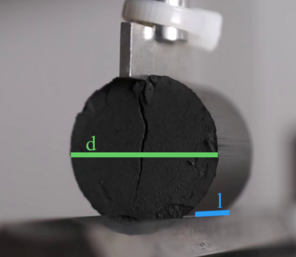
S1 - Tensile Strength
The tensile strength is defined as the maximal mechanical tension a material can resist, before it breaks. For understanding the dust emission from cometary surfaces, the tensile strength is of major importance since it is the maximum pressure the surface material can withstand before it breaks into parts (pebbles and chunks of pebbles). The outflowing gas can then drag the pebbles and chunks into space.
Within the CoPhyLab project we perform novel experiments with the so-called Brazilian Disk Test to measure the tensile strength of various sample materials. These investigations include different dust-ice mixtures as well as several organic materials.
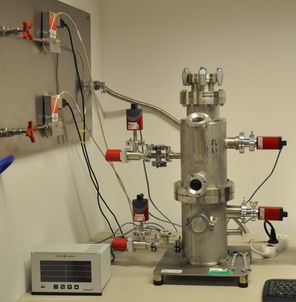
S2 - Gas Permeability
The aim of this project is to better understand the gas diffusion through a porous cometary surface layer. Gas flow measurements were performed inside a vacuum chamber to investigate the permeability of several analogue materials that were chosen to mimic cometary surface properties, as well as glass beads as a reference material. The measured permeability values are ranging from 10-13 to 10-8 m². A dependence of the grain size distribution and the packing properties of the sample has been seen in the experiments.
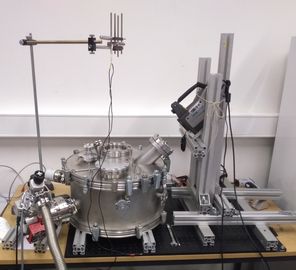
S3 - Thermal Conductivity
This project aims to develop a method of measuring remotely the thermal properties of cometary and asteroid analog samples. For this experiment we place the sample to be studied in a vacuum chamber and then, either by cooling or heating, change its temperature from its equilibrium state of around 20°C. Then by comparing the rate of cooling or heating of the sample (measured by an infrared camera) to a 3D numerical model we are able to constrain its thermal properties. By comparing these properties to those that were measured by the instruments on-board the Rosetta mission we will be able to constrain the composition of the nucleus of the comet 67P/C-G.
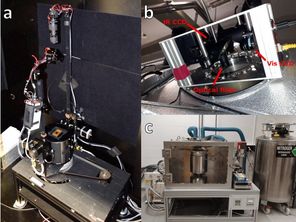
S4 - Optical Properties
The aim of this project is to measure the photometric properties of non-mixed CoPhyLab materials and to constrain physical parameters associated with those properties. Those results will then be used in order to interpret spectroscopic measurements taken during sublimation experiments of mixtures. Photometric and spectroscopic measurements are respectively made with the PHIRE 2 goniometer (a) and the MoHiS spectro-imager (b). At the University of Bern, sublimation experiments are done using the SCITEAS2 simulation chamber (c).
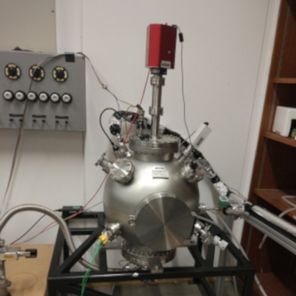
S5 - Sublimation
Cometary dust activity is driven by the sublimation of volatiles (f.e. H20) through the surface of cometary nuclei. Therefore we are measuring the sublimation rate of H20-ice and mixtures and how the outgassing rate is affected due to the development itself. An active cooling system is used to regulate the temperature of the inserted sample (mostly set to 200-215K) and through the mass spectrometer on top we can calculate the sulbimation rate of the sample. A copper sprial is used as cold trap to freeze out remaining gas components, which leads to a clean signal of the mass spectrometer. The final aim of the experiment is to measure the permeability of the material, due to its change in sublimation through the increasing dustlayer on top of the ice.
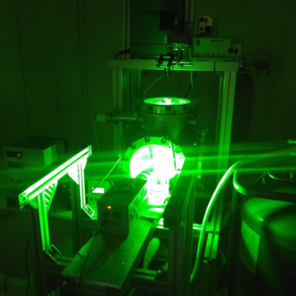
S6 - Particle Ejection
The aim of this project is to determine the physical properties of the particle ejection of comets. The experiment consists of a granular water ice sample which is located inside the small CoPhyLab chamber and illuminated by a halogenic lamp. While the sample is heated up, particle ejection can be observed. This phase is recorded with a high-speed camera to track the particle mid-air. From these recordings, it is also possible to calculate the particle trajectories, starting velocity and acceleration and further physical properties like the gas drag. So far, the self-ejection of granular water ice and a non-zero starting velocity have been discovered.
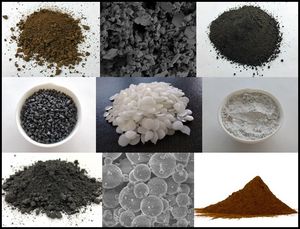
S7 - Sample Materials
In the course of this S project comet analogue materials are developed, produced and analyzed. The repeatable production of well-characterized cometary analogue samples is a key challenge in performing a realistic, state-of-the-art comet simulation experiment. Therefore a comprehensive list of possible materials - minerals, organics and ices - that can be used as basic components for the production of cometary analogue materials, as well as a fact sheet for each material are established. Sample-production protocols ("recipes") of the comet analogues will be created and published after analysis of their physical properties.
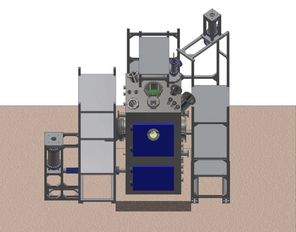
S8 - L-chamber
In the S8 project the main comet simulation chamber of the CoPhyLab is designed and constructed. The aim is to have all instruments and techniques developed in the S projects combined in on chamber. So in total fourteen different instruments will be installed in this chamber to perform measurements on the same sample. The chamber will be equipped with a main cooling system and a cooling shield to simulated cometary conditions. The inner volume of the chamber is 1500 x 740 x 740 mm³ and the number of flanges is fifty plus two quick release doors for maintenance and sample transfer.